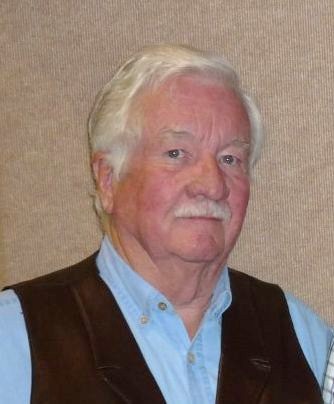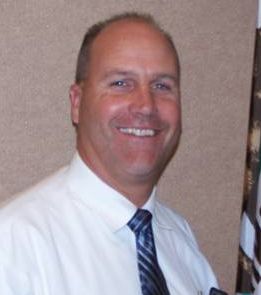“RECLAIMED WATER” – an analysis – Part 3 of 3
“RECLAIMED WATER” – an analysis – Part 3 of 3
by Lyndon Taylor
.
12/22/11 – FINANCIAL ASPECTS OF RECLAIMED WATER
In the two previous segments of this exploration of the reclaimed water issue, we have examined the impact of the use of reclaimed water on the physical environment (e.g. the golf course at Sun Lakes and other areas watered by reclaimed water), and the human health implications of its use.
In this article, I will explore the financial implications of the use of reclaimed water.
Before doing so, however, I would like to make one point clear – a reclaimed water facility is NOT A SLUDGE PLANT! As many of you know, I was one of the leaders in fighting the City Council regarding their proposal to bring a sludge plant to Banning, but the proposal for a reclaimed water plant in no way is comparable to the City Council’s proposal to incinerate sewer sludge in our City.
That being said, let’s examine the financial aspects of this issue.
.
WHAT IS THE COST OF A RECLAIMED WATER PLANT ?
 As close as it can be estimated at this time, the cost of the plant will be approximately $22 million. This will include a state-of-the-art plant for the capture and processing of water from the sewer effluent and it’s purification to standards currently accepted by the EPA (Environmental Protection Agency) for reclaimed water.
As close as it can be estimated at this time, the cost of the plant will be approximately $22 million. This will include a state-of-the-art plant for the capture and processing of water from the sewer effluent and it’s purification to standards currently accepted by the EPA (Environmental Protection Agency) for reclaimed water.
.
HOW WILL THE CITY PAY THE $ 22 MILLION ?
The City will obtain a loan from State Construction funds for the entire amount. This loan will be amortized over a twenty-year period at an interest rate of approximately 2%.
.
HOW WILL THE LOAN BE REPAID ?
The loan repayment will be spread over the 10,000 property owners in the City of Banning that pay for “sewer“as a part of their utility bills. The approximate payment of $1,020,000 per year in principle and interest on this loan will thus cost property owners approximately an additional $102 per year, or $8.50 per month. This will bring the cost of sewer service in the City of Banning to approximately $25.00 per month. For comparison purposes, that’s still roughly half of what property owners in Beaumont are currently paying.
.
HOW DOES BANNING GET THEIR MONEY ?
As you delve deeper into the water issue it becomes apparent that complexities abound.
First of all, there is the demand issue:
As additional people and houses emerge in our city the demand for water logically increases. In addition to drinking water, cooking water, and bathing water, there are also industrial and business uses of water, watering our plants, lawns, and decorative areas, and yes, operating toilets and other waste processing devices.
Second, there is the supply issue:
Make no mistake, water is a finite resource, there is only so much of it, and when we run out of it we call it a “drought”. We saw that back in 2002; water was scarce and lawns weren’t watered and turned brown!
Our water here in Banning comes from wells scattered around the City. Some of these wells are 1,200 feet deep! Think for a minute how much it costs to operate an 800 horsepower pump to raise water that far, then raise it even farther (perhaps 2000 feet) to a reservoir! The wells allow us to take water out of the ground and use them in our homes and businesses. But where does the water come from, it come from rain and other means of restoring the ground water table. To accomplish this, the City can find themselves buying water from State sources to restore the water table; this can become more intense in years of low rainfall.
Third, there is the cost factor:
Water, like everything else, costs money. The one thing we can depend upon is that in the next decade the cost of water will increase. That means that the cost of replenishing the ground water system or supplying water to the homes and businesses in our City will increase. It is probably not inaccurate to project that with population increase and other water demands in our city that water costs could increase by 20% or more in the next ten years. Due to this, Banning will be at the mercy of the water purveyors.
.
ENTER RECLAIMED WATER
 With this background, the concept of reclaiming water from the sewer effluent means that some of the water normally “lost” through watering green areas can be used to replace the potable (drinking) water presently used for this purpose. If the reclaimed water is sufficiently processed to assure health standards and environmental issues are addressed, there is a tangible benefit to be realized by pursuing this process.
With this background, the concept of reclaiming water from the sewer effluent means that some of the water normally “lost” through watering green areas can be used to replace the potable (drinking) water presently used for this purpose. If the reclaimed water is sufficiently processed to assure health standards and environmental issues are addressed, there is a tangible benefit to be realized by pursuing this process.
In addition to the replacement of irrigation water, on a year-long basis some of this water can also be used to replenish ground water.
.
LOCATION OF THE FACILITY
There are presently several locations being considered in the City of Banning for this plant. One, three-quarters of a mile from Sun Lakes, another closer to the main part of the City and suggestions of other sites as well.
It would seem that since the Sun Lakes Golf Course would be one of the main users of reclaimed water (it currently uses 1,300,000 gallons of drinking water per day to water the course and surrounding areas!), that an alternative of placing the plant near the source of high reclaimed water use would be reasonable, particularly if the location of the reclaimed water plant could also be located near the intersection of main sewer lines from Sun Lakes and other residential and business areas.
.
THE BOTTOM LINE
What are the costs of using reclaimed water in comparison to the present system of using potable water? When one factors in the present cost of water and the cost of constructing the reclaimed water facility, the costs of reclaimed water versus potable water is nearly the same. But one must bear in mind two factors, potable water rates are certain to increase, and once the cost of the plant has been eliminated, the cost of reclaimed water production will decrease. Thus, in the long run, reclaimed water will be significantly cheaper and will furthermore provide a means for the City of Banning to control their future with regard to water use, availability, and cost containment.
In the final analysis, if health and environmental issues can be properly addressed and monitoring assurances are put in place to guarantee safety of the end product, there is clearly a financial justification for a further exploration of this proposal.
The City of Banning, and in particular Duane Burke, is to be commended for their forward-thinking approach to solving the water problem that will continue to intensify in future years. Mr. Burke has provided exemplary leadership in this area and is conscientiously pursuing this problem with sensitivity to all of the complexities, both technical and human.
The water problem is not going to go away and clearly someone needs to plan for our future. Clearly, Duane Burke is doing just that. Well, that’s it – you now have all three aspects of the water problem here in Banning and you should have sufficient information to decide for yourself the answer to the issue.
For Part 1 of this article click here – for Part 2 click here
 If you would like to comment or discuss this – or any other – article, please visit us on FACEBOOK
If you would like to comment or discuss this – or any other – article, please visit us on FACEBOOK


